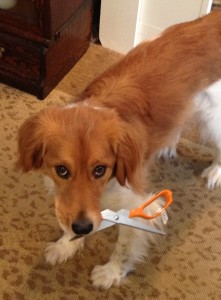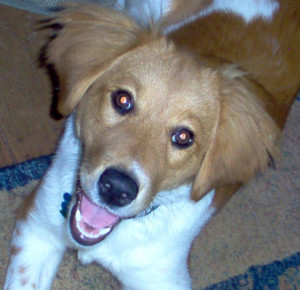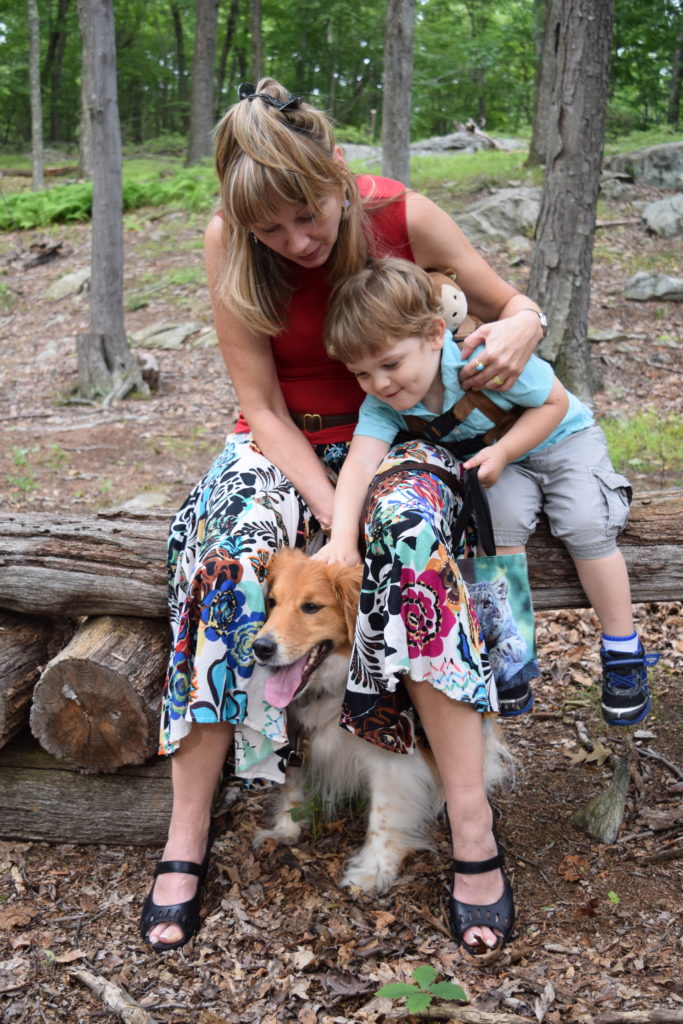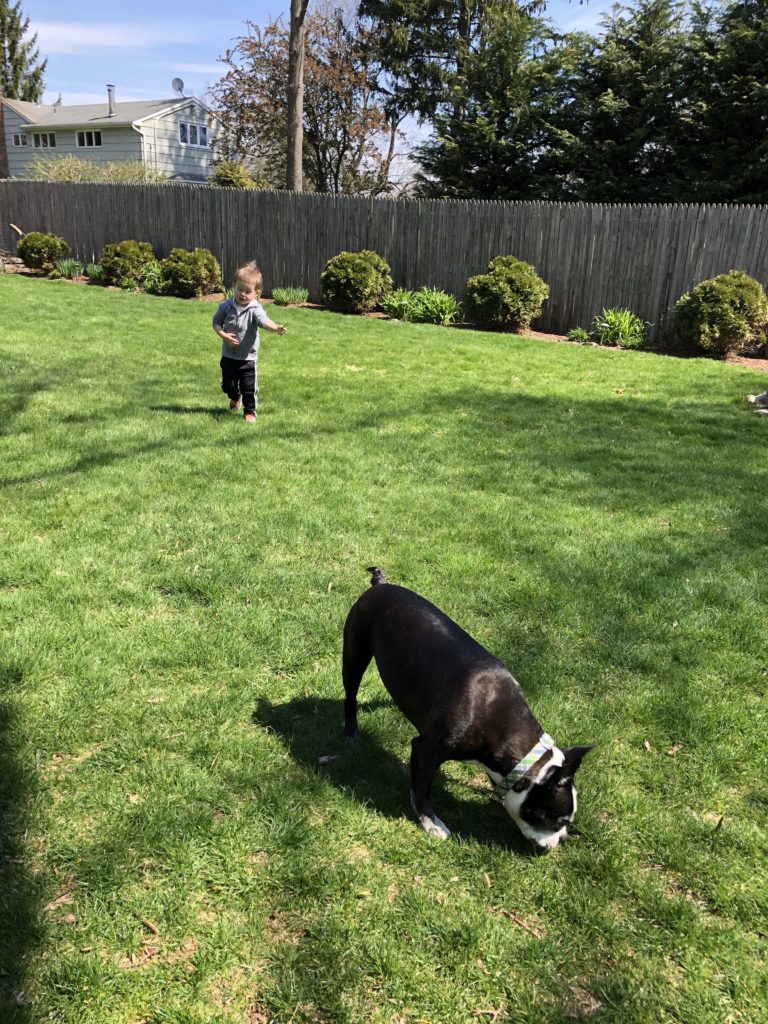We need to mark and reinforce the behaviors that we like, so these behaviors are reproduced over and over. This applies to dog training and life in general. I marked and rewarded Pinball’s behaviors around my son, and my son’s behavior around Pinball for months as I built their relationship.

In Please Don’t Bite the Baby, I talk about Pinball being sensitive and affectionate, but also being the real accident waiting to happen because of his willingness to bite when guarding a resource.
I was determined to make his relationship with my son safe and happy.
Because I was at the shelter the day Pinball was born, and then nursed him through parvovirus, I felt a deep responsibility for him. I wanted to help him be the happy-go-lucky safe dog that he was when he was a puppy.

When Indy was younger, he and Pinball spend a lot of time managed or separated because of Pinball’s mercurial nature and the propensity of small children to not always follow directions around dogs.
I spent much time working on Pinball’s (and my other dog’s, too)
- Basic commands around a baby
- Desensitization and counterconditioning around strange baby toys
- Management stratagies that would allow everyone safe if I had to be distracted-like taking a shower.
In Chapter Six of Please Don’t Bite the Baby, I talk about the importance of teaching your kids how to pet a dog.
All children who live with or interact regularly with dogs need to learn this skill; the earlier you start, the better.
Because showing your baby how to pet the dog gently is as important as teaching your dog to be happy and safe about your baby. Younger children will not have enough motor control to pet your dog gently. Consequently, many dogs get hit, pulled, poked, or a combination of all of these instead of the snuggly petting they are used to from adults.
When a young child is petting a dog, an adult needs to be next to and almost between the dog and child.

I usually keep my hand at or hovering just under Indy’s hand so I can guide him or slip my hand between him and Boo instantly if things go wrong.
Petting a dog is a great motor skill exercise for toddlers, but it is something that takes time for them to master and develop into.
Be prepared to be attentive to this petting for a couple of years until you see your child has the appropriate motor control and skills…”
It was a happy day when I could take Indy and Pinball outside and watch them run around the yard, joyful and safe, and an even happier day when Indy reached out to pet Pinball gently and politely.
The day that our kids can happily pet our family dog is another developmental milestone for those of us with complicated dogs.
A client of mine has kept me up-to-date with her dog and son’s progress. Her dog, Brody, had a history of not being great with kids.

She worked tirelessly to make Brody happy and safe around her son Logan.
And here they are romping together happily and safely.
I know Indy loves Pinball because he says so, and I know Pinball loves Indy because he follows him everywhere. And, even with this great affection they have for each other, their time together will still be managed with me nearby. There will be more hurdles to come, but for today, they are both happy around each other.
For more details on teaching children how to pet dogs see Please Don’t Bite the Baby.